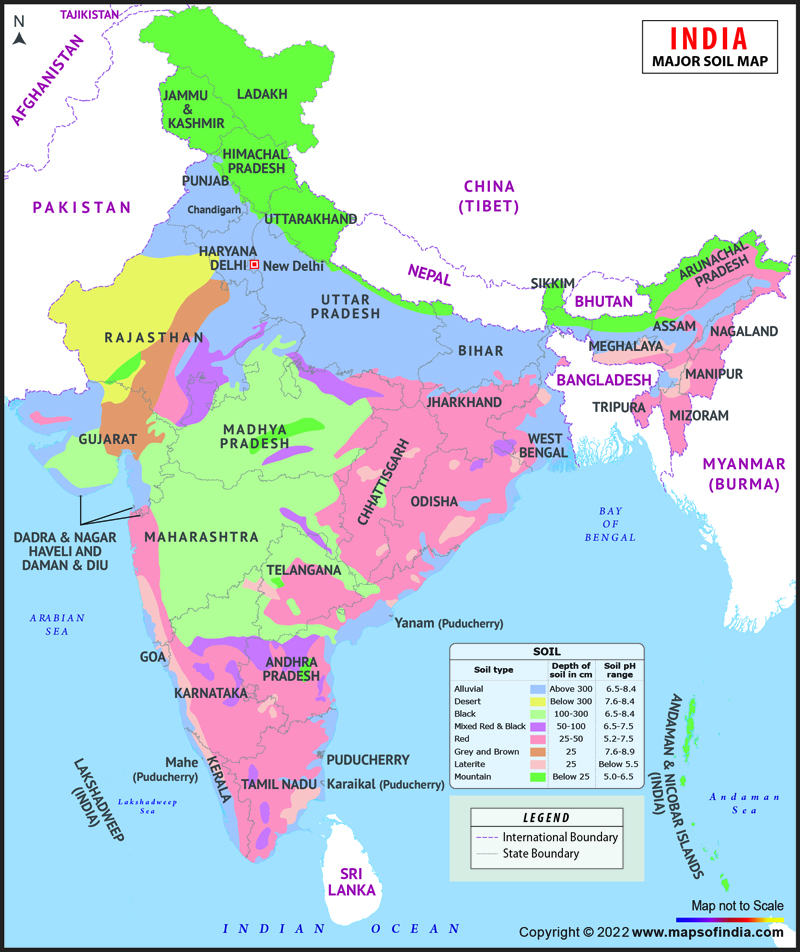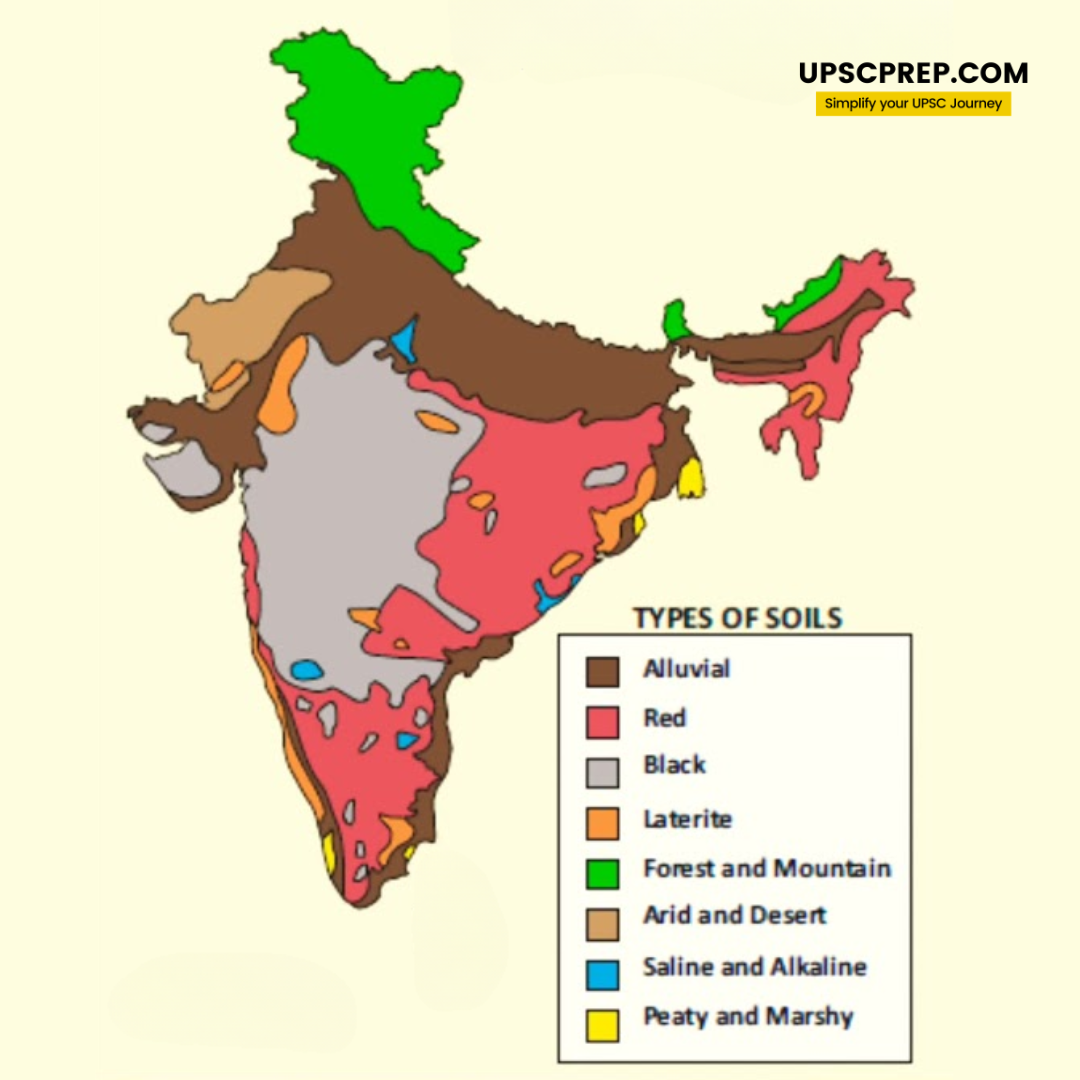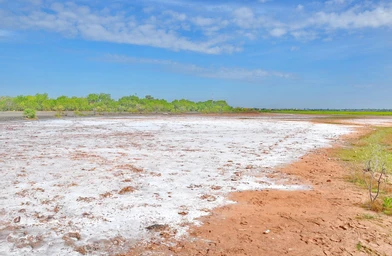Table of contents
In the ancient period, the classification was based on soil fertility (Urvara) or sterility (Usara).
The Soil Survey of India and the National Bureau of Soil Survey and Land Use Planning under the Indian Council of Agriculture Research have studied the classification of Indian soil.

Major Types
Alluvial Soil
- Mostly available soil in India (about 43%) and widespread in northern plains and river valleys, while in peninsular India, they are found in deltas and estuaries.
- Highly fertile and rich in humus, potash, lime, and organic matter.
- They are depositional soil i.e transported and deposited by rivers, streams, etc.
- New alluvium is termed as Khadar and old alluvium is termed as Bhangar.
- But the soil is poor in phosphorus.
- Main crops are wheat, rice, maize, sugarcane, pulses, oilseed, etc.

Red Soil
- It is formed from basement rock of plateau-like regions in low-rainfall areas.
- The structure of soil is porous and friable.
- It is rich in iron but there is absence of lime, phosphate, manganese, nitrogen, humus, potash and calcium carbonate.
- The soil is red in color because of ferric oxide and the lower layer is reddish-yellow.
- Crops like wheat, cotton, pulses, tobacco, oilseeds, potatoes, etc. can be cultivated.

Black Soil / Regur soil
- Regur soil is also a structural soil formed from basaltic rocks. Most of the Deccan plateau is occupied by black soil.
- It has high water retaining capacity and is best soil for cotton cultivation.
- It becomes sticky when wet and shrinks when dried with self-plowing as a characteristic feature.
- The soil is rich in iron, lime, calcium, potassium, aluminum, and magnesium but is deficient in nitrogen, phosphorus, and organic matter.
- Normally it is deep black colored. But this variation is visible when one moves from south to north along western coastal plains.
- It is light black in Karnataka, brownish black in Maharashtra and deep black in Gujarat.

Laterite Soil
- The name of this soil is derived from the Latin word ‘Later’ which means Brick and becomes soft when wet and hard when dried.
- It is found In areas of high temperature and rainfall, and formed as a result of high leaching.
- This results in loss of lime and silica due to rainfall, and organic matter due to action of bacteria.
- The soil is rich in Iron and Aluminum but deficient in humus content, nitrogen, potash, potassium, lime.
- It is red in color due to iron oxide.
- Crops like Rice, Ragi, Sugarcane, and Cashew nuts can be grown.

Desert / Arid Soil
- These are gradational and depositional soils found in arid and semi-arid conditions.
- Formed due to wind activities, they lack moisture and humus.
- Salt and Calcium carbonate content is high which restricts the infiltration of water.
- Nitrogen is insufficient and Phosphate is normal.


Minor Types
Forest Soil
- Forest soils are found in higher altitudes and densely forested regions.
- They are acidic with a shallow topsoil layer and less humus.
- These soils are not suitable for intensive agriculture.
- They are suitable for horticulture, tea, and temperate crops like apples and potatoes.

Peaty / Marshy Soil
- This soil is in areas with high rainfall and humidity with very low vegetation growth.
- Dead organic matter is high making the soil alkaline and black colored.
- These soils are found in areas with high water tables like Kerala backwaters, northeastern India etc and are highly acidic.
- They can support wetland agriculture and are suitable for rice and aquatic crops.

Saline and Alkaline Soils
- Saline soils are found in coastal areas due to intrusion of seawater, and in arid regions due to calcification.
- They are unsuitable for most crops due to alkalinity.
- But these soils can be reclaimed for agriculture through drainage and soil amendments as done by the National Dairy Development Board for fodder crops.

